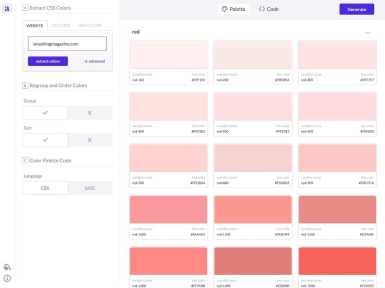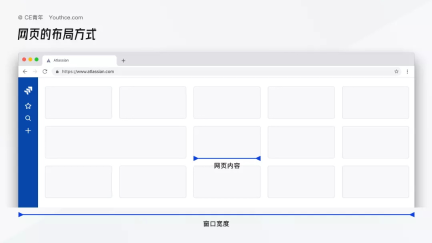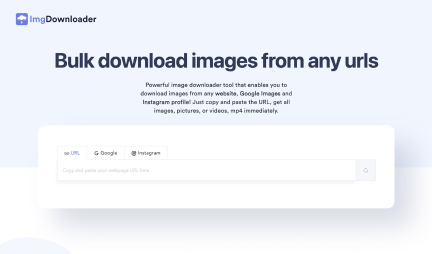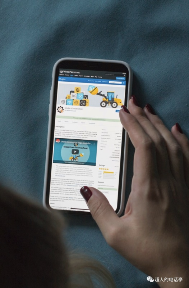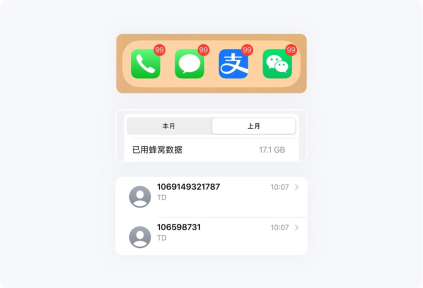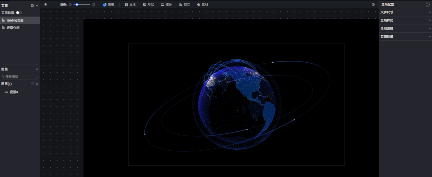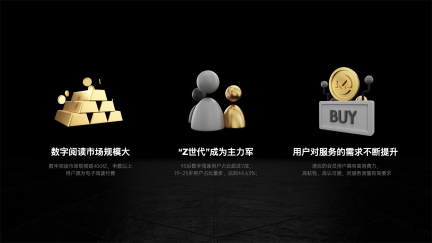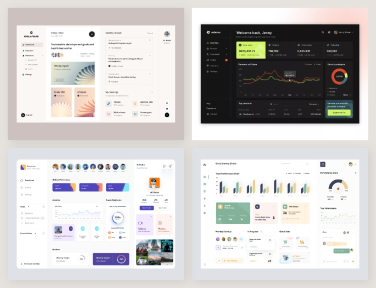Today, I share a project summary about finding partners in Guofeng music circle. I hope it can bring you more design inspiration.
Little ones, I will regularly push illustrations, UI design, typesetting and other related articles and tutorials here. If you have nothing to do, come and visit; Learning on the way of design, never stop, let's refuel together~
National style music has more possibilities, so how is it made?
catalogue
1. background 1.1 music story 1.2 music production process 1.3 user group
2. pain points and situations 2.1 pain points 2.2 use situations
3. analysis of competitive products 3.1 advantages and disadvantages of competitive products 3.2 summary
4. process and function 4.1 process 4.2 function structure
5. page display 5.1 recruitment 5.2 search 5.3 tag and identity 5.4 home page
text
1. background
1.1 music story
Around 2011, I learned that there is a music concept called "ancient style" on the Internet, which uses many ethnic, oriental classical and opera elements. Most of the creators are amateur music lovers or music majors. They publish and communicate on ACG forums, post bars, microblogs, decibel.com, yyfc and 5sing. Later, some influential creative teams began to hold off-line performances, and the ancient style circle began to attract more young people. In 2018, a seminar on the development of Chinese national style music was held in Beijing, including Mo Ming and Qi Miao in the ancient style circle. National style music has more possibilities, so how is it made?
1.2 music production process
Music production can be divided into commercial music production and non-commercial music production from the perspective of profitability. The difference lies in that one of the production objectives of commercial music is profit; Non commercial music does not need to be used for commercial purposes. The production objectives vary from person to person.
The production process is as follows:

1) There is a difference between planning and producers. In addition to completing the content of planning, producers have higher musical literacy and will put forward more constructive suggestions on production. In most cases, the planner is only responsible for determining the production personnel and following up the project progress.
2) The sequence of composition, lyrics and music arrangement will change according to different producers, and an internal consensus can be reached.
3) Actual recording of musical instruments refers to the recording of musical instrument tracks in the recording room, which is not a necessary step. If actual recording performance is not selected, sound source will be used instead. 4) The track file given by the arranger is represented by the sound source.
5) Sometimes harmony is composed and arranged by the singer, and sometimes it is played by the singer. The order is not necessarily after the recording of the main melody.
6) If the mixing involves multiple songs of the same album, the master bandmaster should intervene to complete the overall adjustment.
1.3 user groups
Independent musicians: including students majoring in music at school or amateur music creators who have worked. I hope to express myself through music, record life, make friends, and improve my performance and creative ability. Therefore, I have a weak social purpose.
Music groups: societies, bands, teams, studios, production groups.
Music production entrusting party: it has the needs to produce music suitable for itself, including planning, director, producer, producer, etc.

2. pain points and situations
2.1 pain points
From the opportunity of making music, it can be divided into spontaneous production and commissioned production, which involves several roles: spontaneous producer, client and trustee.

Spontaneous producer (musician):
1) Lack of understanding among musicians makes it difficult to build a trust relationship. 2) it is difficult to find musicians with similar styles to communicate with each other. 3) looking for friends or teams who can cooperate for a long time to make music
Spontaneous producer (Band / Club):
1) Looking for a partner who can make music for a long time
Entrusting party (Planning Director / competition organizer):
1) The special needs of the planning for musicians (the needs for style and completion) 2) the subject matter restrictions of the competition and the selection of artificial species of music
Trustee (musician / team / Studio):
1) The trustee's special demand for materials (demand for style and theme) 2) how to establish the trustee's trust in the planning (demand for planning introduction, planning progress, work quantity and work quality)
2.2 use situation
Y, a college student, is looking for a suitable soundtrack for her short film, because there is no music school around, and her classmates do not have such skills. She found the app of Guofeng music circle, narrowed the scope by searching the style, casually clicked into a musician's home page to read his works and participated in the project, and found other musicians and teams through the project recommendation. Y created his own plan, filled in the introduction of the short film, and uploaded the sample film.

3. competitive product analysis
3.1 advantages and disadvantages of competitive products
Analyze 5sing musicians, Tencent musicians, Douban musicians and Netease musicians.

advantage:
1) It has been operating for a long time and has accumulated many minority musicians; 2) Music update frequency is high; 3) There are many silencing accompaniments; 4) There are beat (a kind of music material) trading and song and lyrics trading.
Disadvantages:
1) The lack of classification of some types of work leads to low exposure of corresponding types of work, and the trust relationship cannot be established at the first time during cooperation; 2) Recently, music identity screening has been added to the web, but it is still a bit confusing. The audience is not suitable for screening among musicians. The arranger and producer are similar, but their functions are completely different; 3) You cannot select multiple genres when applying for residence.

advantage:
1) There are many subordinate music platforms, and many works can be searched;
2) There are songs and lyrics for sale.
Disadvantages:
1) There is no function to promote cooperation among music production types (it is unclear whether this function is available after the settlement).

advantage:
1) Music style is widely classified; 2) Recommending according to the audience's attention list can help listeners with similar preferences find interested musicians.
Disadvantages:
1) Some musicians' customized page layout plates are chaotic; 2) There is no function of communication and cooperation among musicians.

advantage:
1) Netease will launch some music planning projects to promote cooperation among creators; 2) Netease cloud music personalized recommendation increases the exposure of musicians; 3) There is a community of creators; 4) There are beat and song and lyrics trading.
Disadvantages:
1) There are too few categories of identity, only producers, Lyricists, composers, arrangers and singers.
3.2 summary
Several platforms failed to provide a smooth production chain for musicians. After the musicians signed the license agreement, their contact with the platform became stronger, but their contact with collaborators was almost the same as the distance between the audience and them. Musicians have a need to show demo or beat to some people, but they can't meet it. There is a platform to promote the community, and the effect needs to be observed.
4. process and function
4.1 process
According to the scenario analysis in part 2, the process is as follows:

Select partner process
4.2 functional structure

Find a partner functional structure
5. page display
The beginning of the story: start looking for collaborators
5.1 recruitment

If there are already collaborators, you can add members when creating a plan / group. The initiator has the permission to modify the planning information, and can transfer the plan or exit the plan. If the initiator exits without transfer, the plan will be completed and all members will see the end status. You can select multiple genres and styles, and display up to 5 items on the home page.
Recruitment has a time limit, which can avoid too many abandoned recruitment occupying the recruitment homepage. After creation, you can add existing collaborators as planning members. The initiator can select a plan to publish the recruitment.

Dynamic effect description: here is the process of the planner (producer) clicking No. to enter the create planning page. When the text appears, it will sink slightly and then recover according to the elastic change of the icon. The speed curve slows down when switching pages.

Dynamic effect description: This is to add existing members to the planning list. Select the type of work. The option box expands elastically. When the option is pulled to the bottom, there will be position offset and then rebound. The selected type of work will enter the site in a rolling manner.
5.2 search

The search needs of musicians include individual, group, work and plan. According to the music production process, the most important screening condition for individuals is the type of work. The subordinate filter condition for filtering by works is genre style. The subordinate filter condition selected by enterprise plan is subject matter. The subordinate screening criteria for group screening are genre style and subject matter.
5.3 label and identity
Tags play a role of visual diversion in search, home page display and work display. The labels involved in this application include: genre style, type of work and theme.

Genre style label

The user identity is divided into individuals and groups according to the structure, and is divided into the entrusting party and the entrusted party according to the needs.
According to the structure, individuals: Planner / Producer / producer, lyricist, composer, arranger, singer, musical instrument player, mixer / master tape, painter, visual designer, PV artist; Group: band, studio / team, competition organizer. Multiple combinations of personal identities can be selected. Group identity cannot be combined with personal identity.
According to the demand, the entrusting party: the planner / Producer / producer, and the organizer of the competition; Trustee: Lyric writer, composer, arranger, singer, musical instrument player, mixer / Master band, painter, visual designer, PV division, band, studio / team.
Combining the two dimensions, four identity types are obtained: individual consignor, group consignor, individual trustee, and group trustee.

Here are some considerations about identity:
Painter / visual designer /pv
Music production in a narrow sense does not include publicity (such as cover design, poster design, pv/mv production), so the types of work such as painter, visual designer, PV designer, etc. will be deleted according to the specific situation.
band
Considering that the formation of a band is mainly for instrument players and singers who are also responsible for lyrics, music composition and music arrangement, the authority to list the band separately in the group is the same as that of the studio and the team.
Music audience
At the beginning of sorting out the user identity, I thought about the choice of the identity of the music audience. The reason for the reservation is that this application is mainly for music producers, but music production is also a process of communication, not only with music professionals, but also with listeners. The reason for the removal is that the threshold of audience identity is low. If it accounts for too many users, it will lose the significance of being a music production and communication platform.

Type of work label
Relationship between identity and type of work: identity sometimes corresponds to one type of work, and sometimes corresponds to a collection formed by multiple types of work. For example, identity a-> planning, identity b-> composition / arrangement / mixing.

Subject label
5.4 home page

In addition to the user home page, the project also has a home page. In the introduction of the home page of the project, the parent-child relationship diagram of the project will be displayed to help musicians understand the development of the project. The planning relationship is edited by the initiator. Musicians can also look for projects of interest by looking at similar projects recommended. Similar musicians and related projects will also be recommended on the personal homepage, and relevant musicians (group members), similar groups and related projects will be recommended on the group homepage.

Dynamic effect description: take the selected image and name of the project as the transition link. Recruitment list data items exit quickly. The list of works on the planning home page quickly enters the site. The pay attention button will be displayed after the card information is complete, prompting the user to pay attention to the plan.

6. summary
As the first part of the series, it introduces the project background and user groups of Guofeng music circle, analyzes the pain points of users and describes the use situation of looking for collaborators. Take the production and exchange circle of musicians as the starting point to analyze the relevant competitive products. With reference, the flow and function structure diagram are given. Starting from finding partners, show the recruitment module and the design points involved.
Original address: dark horse family (official account)
Author: dark horse Youth

Please note: learn ui network » UX design summary of Guofeng music circle
